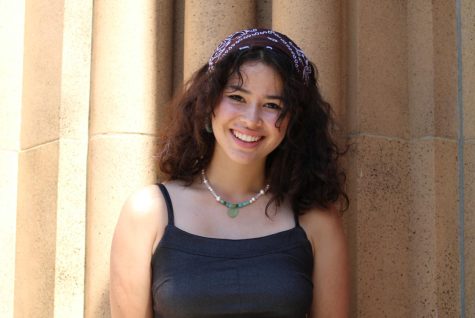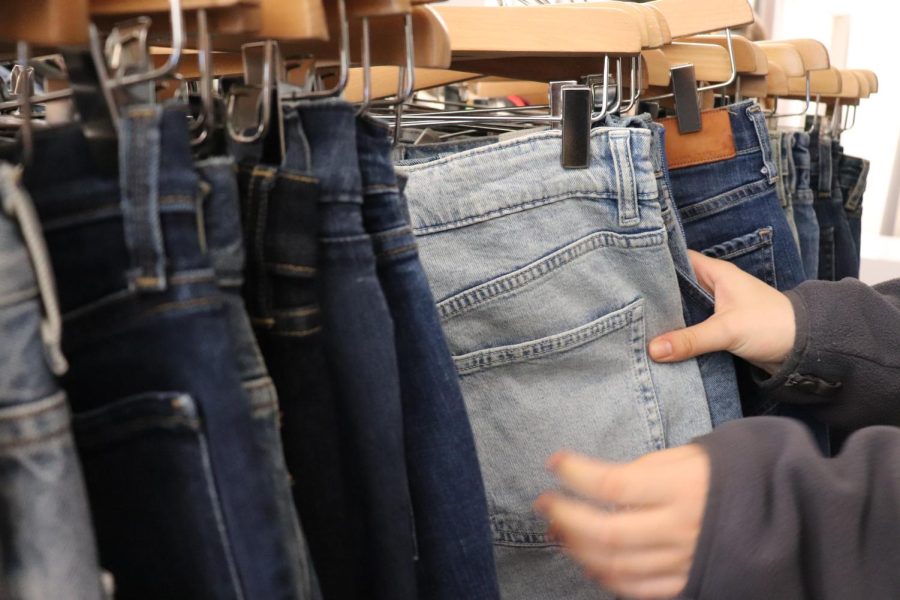Shifting to Thrifting
Exploring local vintage stores and the rise in secondhand shopping
The Bay Area is home to countless vintage thrift stores, ranging from consignment to thoughtfully curated sourcing. The rapid circulation of fashion trends has raised concerns among consumers due to the result of the negative effect on the environment. More students have turned to these local, second-hand stores rather than popular fast-fashion stores.
Most thrift stores sell clothes that were produced in the late 20th century to the early 21st century. Paly senior Maya Quinlan believes that the rise in popularity of thrift shopping is correlated to the quality and durability of the clothing.
“[Thrifting] has become more popular because the quality [of fast fashion clothes] has gone down in the last few years,” Quinlan said.
Similarly, Paly junior Austin Eng believes buying clothing in the secondhand market gives the garments a new life instead of throwing them away.
“Vintage clothing is often better quality,” Eng said. “When it was made 30 or 40 years ago, it was made to last.”
Amidst the climate crisis, Paly junior Kiara Tavakoli believes that shopping secondhand is something that everyone should strive for.
“[Companies] are using cheap labor to produce these cheap quality products; it’s bad for the environment, and it’s bad for the workers,” Tavakoli said. “We all live on this planet.”
Eng works at Blue Bin Vintage, a boutique that sells vintage items in downtown Palo Alto. For Eng, working at this store provides the opportunity to connect with other people who share the same love for vintage clothing
“Because Blue Bin sources [their clothes] locally, there isn’t a lot of impact on our carbon footprint,” Eng said. “It’s harder to buy something brand new when you could buy something of equal or more value that was made to withstand time.”
According to Eng, Blue Bin Vintage aims to make vintage clothing accessible. People are able to try clothing on and buy unique clothing for a more affordable price compared to larger retail stores.
“[Our owners] put the clothing in a store so people can look at it and feel the texture and quality,” Eng said. “[Customers] can look at the color, see how it fits, try it on and avoid the scam of online websites.”
Tavakoli has noticed a recent increase in vintage shopping, especially at Fillmore and Fifth, where she works.Her take is that customers have realized the environmental benefits of it.
“A lot of people have become more environmentally conscious,” Tavakoli said. “Secondhand shopping is a good way to keep clothing items circulating instead of having to create new ones.”
Signs of wear and item defects do not limit Tavakoli. She alters the clothing to give the piece a second chance.
“A lot of the time, you can work around it,” Tavakoli said. “You can crop clothes or you can get the stains [out].”
Thrift shopping doesn’t only provide positive effects on the environment, but it’s also great for new shoppers who want to explore fashion.
“When you go thrifting and [go to] consignment stores, your style evolves to be less basic,” Tavakoli said.
Eng has also noticed the personal benefits of buying second-hand. His experience in retail has made him more aware of notions that steer people away from buying second hand.
“A common misconception about vintage clothing is that it’s priced up a lot,” Eng said. “In reality, you can find something very affordable, or maybe even cheaper than fast fashion websites.”
What causes the overconsumption of short-lived trends? Tavakoli has observed that social media has played a major role in fast-fashion and promotes many clothing brands that use influencer-driven marketing to psychologically lure consumers into buying clothing.
“If you see your favorite influencer wearing something, you’re going to want to buy it,” Tavakoli said.
Quinlan believes that when vintage shopping, it is important to have a precise goal in mind.
“The best way to find good things on online secondhand shopping apps is [to] be very specific,” Quinlan said.
By being specific with the items of clothing that she wants, Quinlan is able to compare prices between different websites and find unique pieces for affordable prices.
“A lot of people feed into fast fashion because of the [low] prices, but they don’t realize that you can still buy affordable things secondhand,” Quinlan said.
“You’re just buying more, but you’re getting less use out of it because the quality is so terrible,” Quilan said. “You’re buying things that aren’t going to last you very long.”
Eng explains that the thrifting process may take more effort than buying from major retailers. Although this may be the case, he encourages customers to clear their mind of prior misconceptions.
“My advice to people who want to get into the thrifting community would be to have an open mind,” Eng said. “When you do find something, it is way more rewarding.”
Print Issue
Please click on the three vertical dots on the top right-hand corner, then select “Two page view.”

2021-2022 - Staff Writer
2022-2023 - Photo Director
Hey! I joined C-Mag because of my love for journalism, especially the creative aspect. My favorite...







